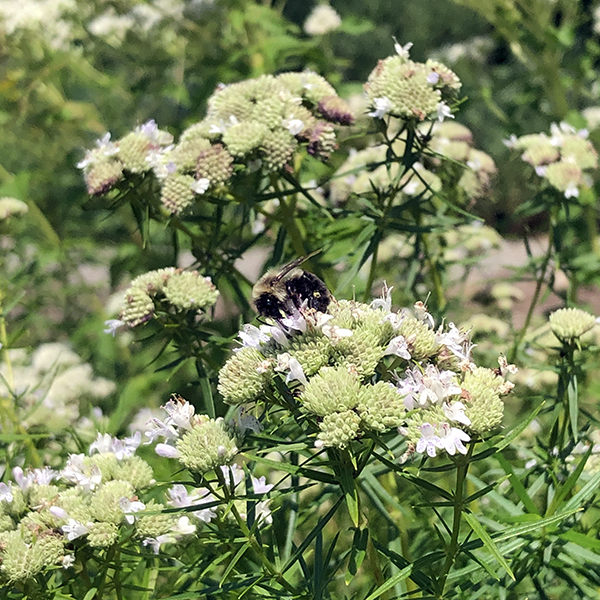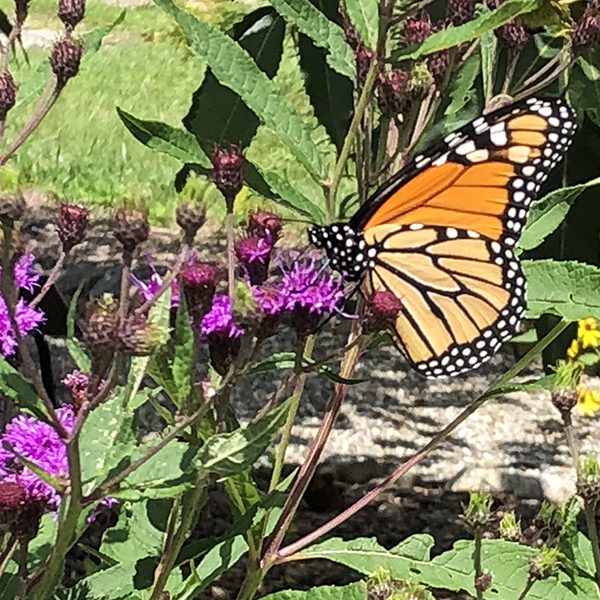
August 17, 2023| Education, Environment, LHF Environmental & Cultural Center
By: Marty and Laurie Kane
Our native plant spotlight last week was so well received, we are featuring two more varieties that are currently flowering in our native gardens!
The Lake Hopatcong Foundation native gardens remain vibrant with many plant varieties in bloom and a lot of activity from bees and other pollinators. We were thrilled to even get a chance to see a monarch enjoying the New York ironweed during one of our visits (pic below)! Native plants provide nectar, pollen, and seeds that feed native butterflies, insects, birds, and other animals.
 |
 |
| New York ironweed | narrowleaf mountain mint |
New York ironweed is a tall perennial growing 5' to 8' in height. It does well in full sun to partial shade and is generally ignored by deer. Clusters of small reddish-purple flowers bloom from late July into fall. The plant’s name is attributed to its “iron-like” qualities, including its tough stems, the rust-tinged color of its fading flowers, and rust-colored seeds. Native Americans made tea from the plant to treat medical conditions including childbirth pain, stomach ulcers, and loose teeth. The flowers attract butterflies and the seed heads attract birds after the flowers are gone.
Narrowleaf mountain mint is a many-branched, native perennial that grows 2' to 3' tall. It features extremely narrow, needle-like leaves and large clusters of small, white flowers which bloom in mid to late summer. It grows well in sun to partial shade and is deer resistant. All parts of the plant emit a strong, mint-like aroma when crushed. Mountain Mint been used in herbal teas and by many Native Americans as a seasoning. The flowers are a favorite for bees and butterflies, as witnessed by the pollinator enjoying the nectar above.
Please stop by our gardens at 125 Landing Road, Landing, and enjoy a look. You may find a new variety to try in your own garden next season!